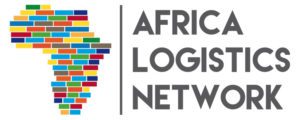The next cotton export season is just around the corner, below are some interesting facts about this particularly important commodity exported from Africa. Standard containers used for cotton shipping are usually 40-foot boxes with a net weight of approx. 19.5 tons of baled cotton, which corresponds to 80 up to 90 bales of cotton, may vary depending on the various origins and sizes of the bales.

Origins & uses
Cotton is mainly used in the textile industry, it is the most used natural fiber in the world today compared to other products like jute, silk, kapok, hemp, or wool that are also used in that industry.
There are 12 cotton producing countries in West Africa: Benin, Burkina Faso, Cameroon, Central African Republic, Chad, Côte d’Ivoire, Ghana, Mali, Niger, Nigeria, Senegal, and Togo. This region accounts for over ¾ of Africa’s cotton exports. Almost all West African cotton is exported, as factories are scarce in the region, the role of this commodity and the international demand is vital for the economy of the region and for West African producers.
Cotton represents for example 25% of Benin’s exports are nearly 60% of Burkina Faso’s exports. In Africa, cotton is almost exclusively grown by smallholders, and there are very few large plantations. The cotton plant likes heat, it needs about 200 days of sunlight to grow. It therefore thrives in the dry or humid plains of Africa as the climate, with its high average temperatures and the alternation between dry and wet seasons, favors the cultivation of this natural fiber.

The economic context for African cotton
In the last 40 years, world cotton fiber production has doubled from 10’000’000 to 20’000’000 tons per year. There are many countries producing cotton, but world production is dominated by China (29%), the United States (17%) and India (12%) accounting for nearly 60% of total world cotton fiber production.
The West African region reaches the 5th position in the world and accounts for 5% of world production, but production has increased tenfold since the ‘60s and reaches now over 1’000’000 tons per year.
World demand for cotton fiber has increased by 2% per year in parallel with population growth, although world consumption of synthetic fibers has increased by approx. 5 % per year as well. Today, natural cotton represents about 40% of total cotton production.
The future
The robust growth in consumption in the Southeast Asian regions provides interesting perspectives for West African countries. Initiatives are being more and more taken to increase the production of organic cotton which offers a more environmentally friendly and profitable alternative, with up to two to three times more benefits and safer organic forms of pest control and soil fertilization. The demand for this type of cotton is expected to increase in the coming years.

Our optimal logistics solutions for your cotton shipments
At ACS Africa Container Shipping we offer transportation solutions for cotton shipments to our customers from Cotonou (Benin and Niger), Abidjan (Ivory Coast, Mali and Burkina Faso), Douala/Kribi (Cameroon, Chad and the Central African Republic), Tema (Ghana), Dakar (Senegal and Mali), Lagos Tincan/Apapa (Nigeria) and Lomé (Togo) to the ports of Chittagong (Bangladesh), Tanjung Pelepas & Port Klang (Malaysia), Haiphong & Ho Chi Minh (Vietnam) as well as many Chinese ports such as Qingdao, Shanghai, Tianjin, Ningbo and many others.
The cotton season is starting, we are ready, don’t hesitate to contact us for more information. With our own offices in Dakar/Senegal, Abidjan/Côte d’Ivoire, and Douala/Cameroon we can offer other logistic services such as inland transport, cross border transport, warehousing, customs clearance as well.






